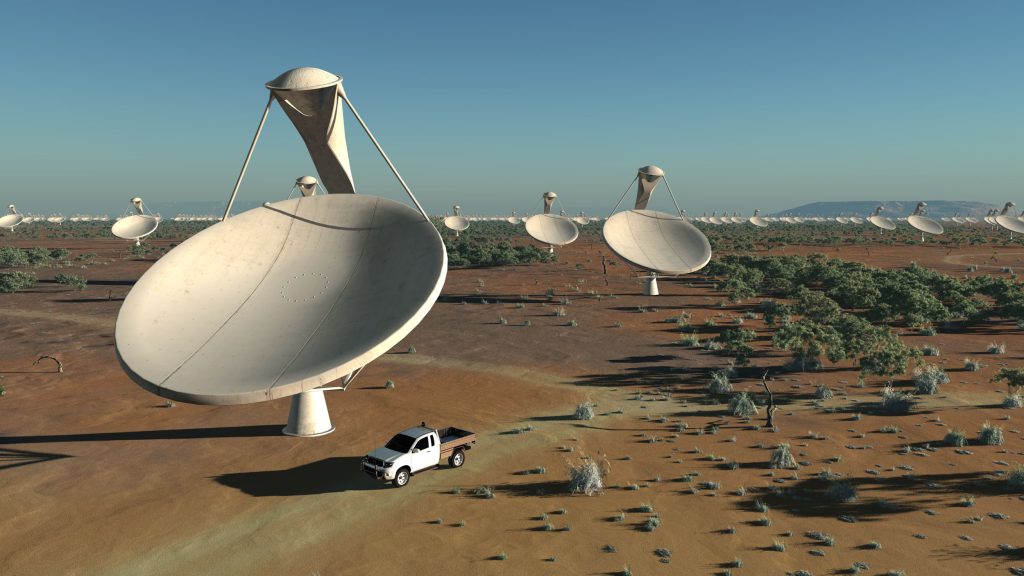In Australia and South Africa, work on the largest radio astronomy facility ever started. The Square Kilometre Array will have a sister facility with 133 dish antennae in South Africa and 131,072 low-frequency antennae in Australia (SKA-Low).

“Astronomers like myself will utilise the telescopes to precisely measure gravity in harsh situations and trace hydrogen over cosmic time. Additionally, we want to find out if complex compounds exist in planet-forming clouds around far-off stars since they might be the first traces of life elsewhere in the universe, according to SKA scientist Cathryn Trott’s article in The Conversation.
The SKA project is a multinational initiative to construct the biggest telescope ever. The telescope will eventually have a collecting area larger than a square kilometre, as the name suggests. The project’s initial pre-construction development phase started in 2013. Even though the project’s development has already started, scientists won’t be able to start making observations until the late 2020s.
In Australia, SKA-Low will initially have 512 stations spaced out over a 65 km distance, grouped in the form of a big core with three spiral arms. These stations will each have about 256 distinct antennae.
The SKA-Low observatory will “define the next fifty years for radio astronomy, charting the birth and death of galaxies, searching for new types of gravitational waves, and expanding the boundaries of what we know about the universe,” according to Sarah Pearce, the observatory’s director, in an interview with The Guardian.
The 64-dish MeerKAT telescope in South Africa will now have 133 dish antennae added to it. There, the majority of the dishes will be gathered in a core with three spiral arms extending 150 kilometres from it. According to Reuters, the precursor MeerKAT telescope was constructed in the South African Carnarvon region due to its remoteness and the fact that the nearby hills will shelter it from radio interference.
Contrary to single-dish telescopes, interferometers like the SKA are scalable, allowing for the gradual addition of more antennae to increase their capabilities. The facility will eventually be expanded over both sites and into more African nations, according to the SKA.
The enormously powerful telescope will be used to pursue a number of scientific objectives, ranging from testing the bounds of Einstein’s general theory of relativity to unravelling the nature of the enigmatic dark energy. Trott claims that the SKA will enable researchers to view the “cosmic dawn,” or the moment when the first stars and galaxies were born. The “cosmic dark ages,” which occurred after the Big Bang when the Universe cooled through expansion, are now over.
The earliest stars’ light, which shattered the neutral hydrogen atoms’ electrons and protons, changed the universe from dark and neutral to bright and ionised. The SKA will map this hydrogen cloud, enabling researchers to study the genesis and demise of the earliest stars and galaxies. The SKA will be “sensitive enough to detect an airport radar on a planet circling a star tens of light years distant,” according to Pearce, who suggested that it might be used to search for evidence of extraterrestrial life.











